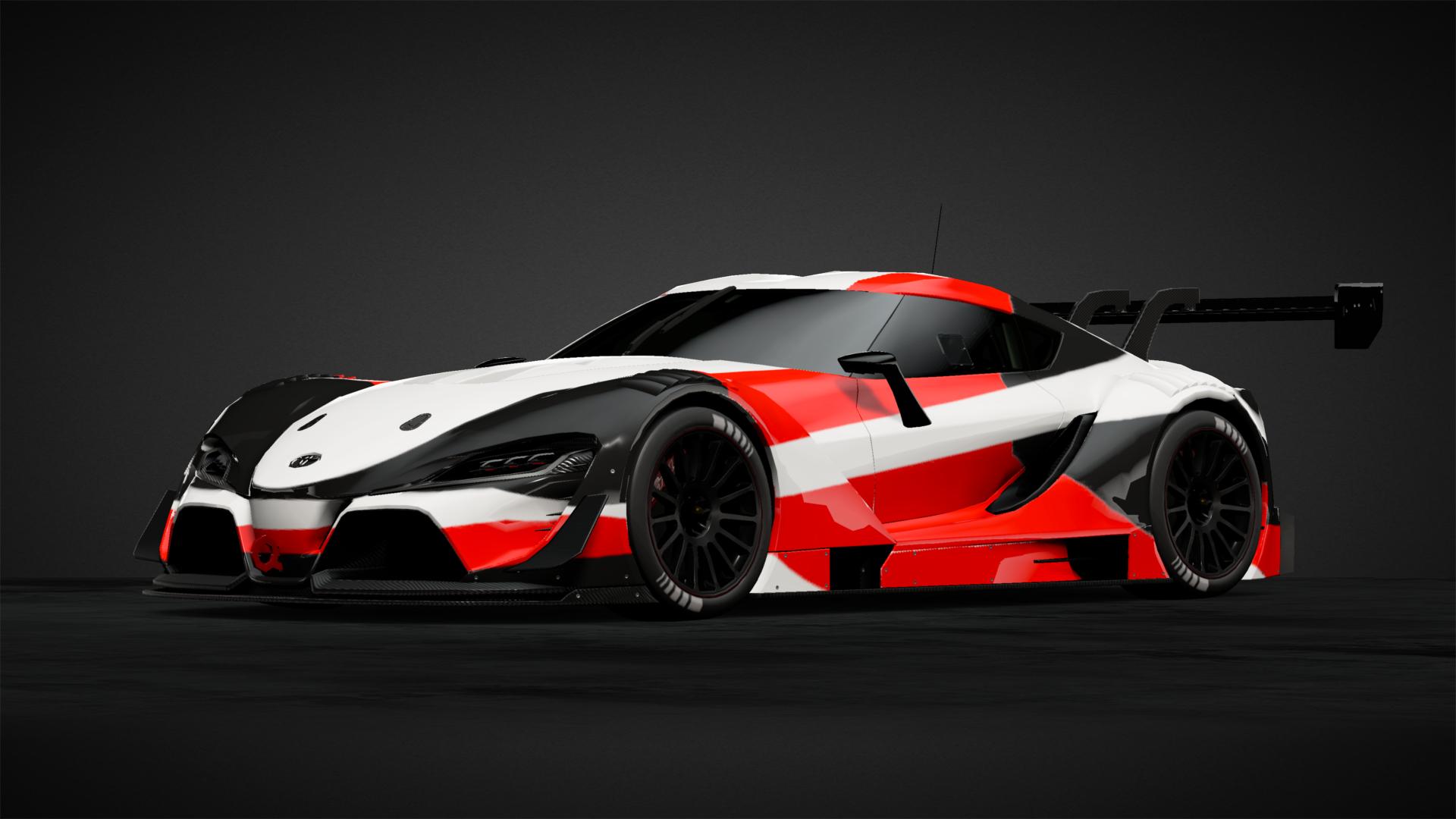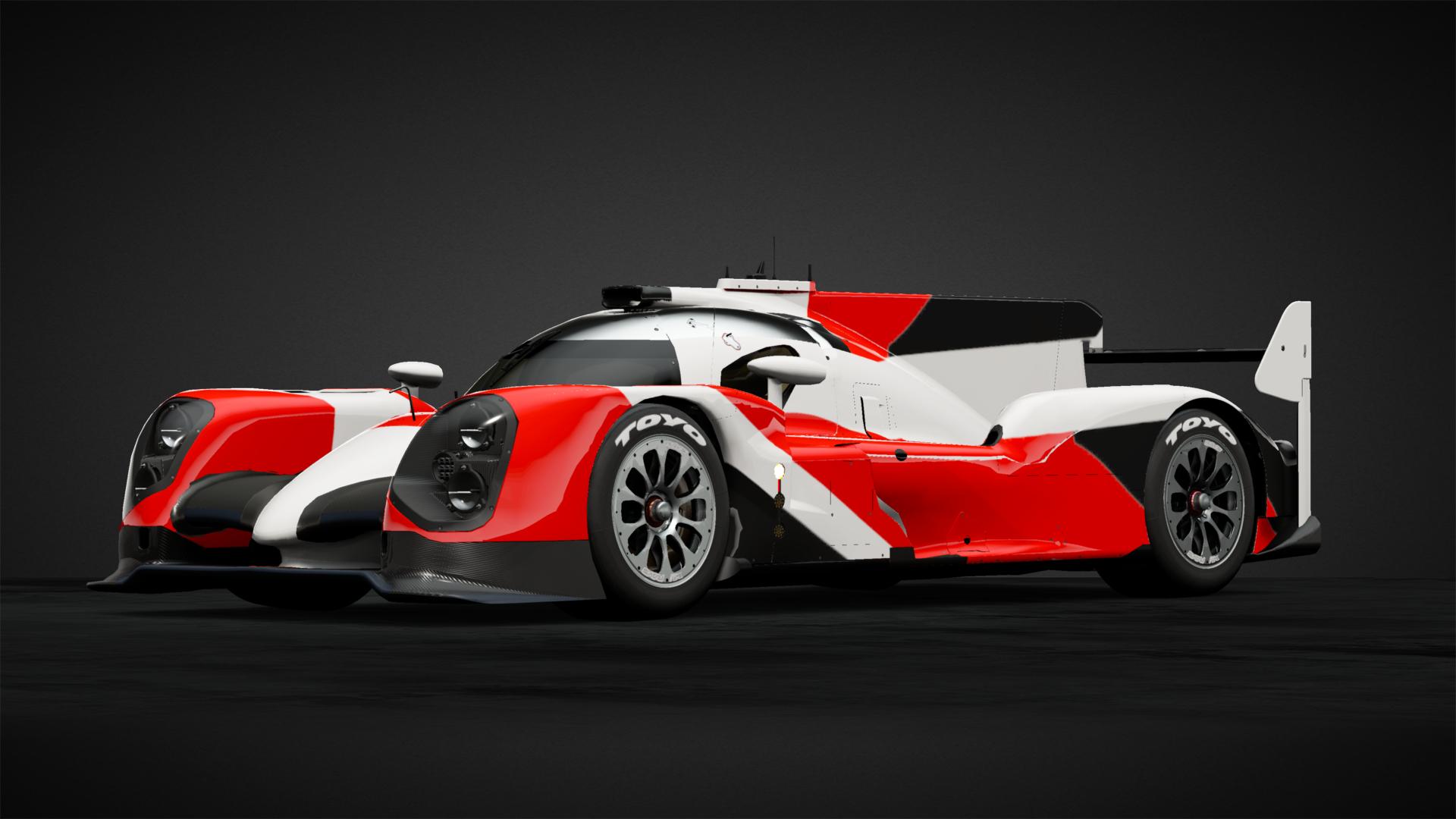
FT-1 Vision Gran Turismo Gr.3
Based on the the FT-1 Vision Gran Turismo, this variant of the FT-1 is homologated to the Gr.3 Class to be eligible for the Gran Turismo Manufacturer’s Cup.
The designers’ original intention in designing the FT-1 was to unabashedly appeal to the die-hard car enthusiasts. In the same way, the FT-1 Vision Gran Turismo Gr.3 is designed for die-hard Gran Turismo fans. The designers focused on keeping the FT-1 Vision Gran Turismo Gr.3 authentic for the virtual racetracks of the game, to maximize their driving pleasure.
Because the bones and architecture of the FT-1 already lend itself to cooling and down force through “function-sculpting,” the vision version just needed to be enhanced as a pure racing car. The designers extensively studied racetracks and racecars and applied their research into the styling. A deep sense of rawness is evident in the FT-1 Vision Gran Turismo Gr.3, due to its purely function-driven design aesthetics. The fenders and tires are wider for extreme grip on the track. The enlarged air intakes provide increased cooling, and a larger rear wing and additional front canards have been added for even more down force. The rear diffuser has been enlarged with multiple vertical fins, and is moved further back for cleaner airflow.
The FT-1 Vision Gran Turismo Gr.3 looks and feels the way it performs, so the driver can speed through the racetracks with the same sensation and thrill of real racing.

TS050 Hybrid LMP1
The TS050 Hybrid is a prototype racing car, developed by Toyota in 2016 to compete in the LMP1 class of the FIA World Endurance Championships, which includes the famed Le Mans 24-hour race. Two years prior to this, in 2014, Toyota became the series champion in the TS040 Hybrid. In 2015 they ended the season in 3rd place, and the TS050 was developed from scratch to attempt a return to the top once again, which it later conquered Le Mans in 2018 and 2019.
As with its predecessor, the car was still an all-wheel drive hybrid with a MGU in the front and rear wheels, but the powertrain was greatly changed from the previous naturally aspirated 3.7 liter V8 to a twin turbocharged direct injection 2.4 liter V6. The battery was changed from the super capacitor with fast charge and discharge characteristics to a high-power lithium-ion battery developed for racing, with a high-power storage capacity. The total system output, including the engine and front/rear motors, is 986 BHP, making it equal to the TS040 in this respect, but the torque had been increased significantly due to the turbocharging.
model.
To enhance the 86’s handling, the company’s chassis engineers stiffened the body and adopted aluminium in the roof panel to lower the centre of gravity, as well as reduce overall height. With the GR86, Toyota offered sports-car enthusiasts exactly what they were hoping for with the 86: a meaner, faster version of the car that was designed for the race track.
